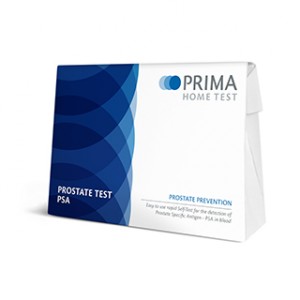As a man gets older, the prostate gland will continually get larger and larger, most of the time due to a condition which is named benign prostatic hyperplasia, also known as BPH. This condition can sometimes contain cancer cells, and thus it can lead to prostate cancer. Usually, the prostate cancer will stay far from the urethra and in the early days it will actually be very hard to detect as there are no major symptoms. However, as time passes this condition will start to worsen, thus causing numerous symptoms.
What Are the Symptoms of Prostate Cancer?
One of the major issues that will appear when you have prostate cancer is the fact that you have to go to the toilet very often in order to pass urine. While this rush can sometimes be identified with drinking too many fluids, if you need to go to the toilet all the time, for weeks and weeks in a row, then you have to contact your doctor.
Moreover, if you see that the need to urinate increases exponentially out of a sudden, then this is also a sign that you might have prostate cancer. Most of the time, you’ll see that this particular need to pass urine will appear during the night, when normal persons don’t really tend to urinate that often to begin with.
But this is not all, as the persons that are prone to prostate cancer will also encounter a difficult to pass urine, as both starting and stopping the urinating process can be very hard and painful to begin with.
On top of that, another prostate cancer symptom that is usually encountered comes in the form of having a sense that you can’t completely empty your bladder. This particular sense not only causes discomfort, but at the same time it’s a clear sign that you have to check with the doctor in order to see if you have prostate cancer or if you are prone to it.
Other symptoms which aren’t encountered that often include pains when you are urinating or, in very rare situations, blood in the semen or the urine.
Moreover, some of the first symptoms that appear in the case of prostate cancer are related to bones, so when a man has prostate cancer, he will sometimes start to feel pain in the pelvis, back and hips areas. It the prostate cancer spreads to other portions of the body, then it’s called secondary prostate cancer, but despite the name it’s still very dangerous.
As you can see, the prostate cancer symptoms vary quite a lot, but one thing is certain, you do need to try and identify if you have any of the symptoms above, and if you do, then you need to visit the doctors immediately, as this is the only good way to fight prostate cancer and get rid of it.
Additional Symptoms
Some additional symptoms to be aware of that may indicate prostate cancer include:
- Erectile dysfunction — Difficulty developing or maintaining an erection can be an early sign of prostate cancer in some men. This may occur due to nerve damage or reduced blood flow caused by a tumour.
- Discomfort in the pelvic area — Some men experience pain or pressure in the pelvic region, hips, lower back or upper thighs. Spreading prostate cancer can place pressure on nerves causing uncomfortable sensations.
- Blood in semen or urine — While less common, blood may be visible in semen or urine in some cases. This can indicate abnormal cells or inflammation in the prostate. Even small amounts of blood should be checked urgently.
Who Is at Risk?
While any man can develop prostate cancer, some factors place certain men at higher risk:
- Age — The cancer risk increases substantially after the age of 50 and continues to rise as men get older. More than 60% of cases occur in men over 65.
- Family history — Having a father, brother or son diagnosed with prostate cancer more than doubles your risk. Genetics can play a role.
- Race/ethnicity — Prostate cancer is more common in African-Caribbean and African-American men. Reasons for this are still being researched.
- Diet — Eating lots of high-fat dairy and red meats may increase risk. Diets high in vegetables and fish are considered more protective.
Treating Prostate Cancer
If cancer is confirmed through testing, treatment will depend on the stage and aggression of the disease. Options can include:
- Active surveillance — Monitoring via regular tests without immediate treatment. This may be recommended for older men or slow-growing tumours.
- Surgery — Removing the prostate gland and possibly nearby tissue. This is usually done if the cancer is contained in the gland.
- Radiation therapy — Using targeted radiation to kill cancer cells and stop them multiplying. This is often combined with hormone treatment.
- Hormone therapy — Blocking hormones like testosterone that can fuel cancer growth. This may be used before and alongside other treatments.
- Chemotherapy — Using anti-cancer drugs to kill fast-growing cells if the cancer has spread beyond the prostate. This can help extend survival.
Living with Prostate Cancer: Quality of Life Considerations
Prostate cancer and its treatments can significantly impact a man’s quality of life. Here’s what you need to know:
- Emotional wellbeing: A diagnosis can trigger anxiety and depression. Don’t hesitate to seek mental health support.
- Sexual function: Treatments may affect erections and libido. Talk to your doctor about options like medications or therapy.
- Urinary issues: Incontinence is common post-treatment. Pelvic floor exercises can help regain control.
- Fatigue: This is a common side effect. Regular light exercise and a balanced diet can boost energy levels.
- Relationships: Open communication with partners and loved ones is crucial. Consider joining a support group to connect with others facing similar challenges.
Remember, many men lead full, active lives after prostate cancer. Work closely with your healthcare team to manage symptoms and maintain your quality of life. Don’t let cancer define you – focus on what brings you joy and purpose.
What to Do Next
Doctors can run several tests to diagnose prostate cancer if they suspect it. These tests may include a digital rectal exam, a blood test to check prostate-specific antigen (PSA) levels imaging like ultrasound or MRI, and a biopsy to examine a small tissue sample.
Choosing a treatment for prostate cancer can seem daunting. Patients need to consider many things when looking at their options such as how far the cancer has spread, their age overall health, and personal wishes. Common treatments involve surgery, radiation, hormone therapy, chemotherapy, or a mix of these. No matter what you choose, it’s crucial to start talking with your doctors .
Regular screenings and check-ups often help catch prostate cancer . This improves the chances of good outcomes for men over 50 or those with a father or brother who had the disease. Knowing what to look for and getting checked boosts survival rates.
Testing PSA levels is one way to catch cancer early or rule it out. Around 75% of elevated results are caused by non-cancerous enlargement or infection instead. Still, checking yearly over 50 is wise to baseline changes over time. One in seven normal tests miss cancer present, so additional yearly screening is key.
Home Prostate Health Test
As men age, PSA levels may fluctuate due to As men get older, their PSA levels can go up and down because of different things. This might happen if their prostate gets bigger, they have a problem with their urinary tract, or even if they have prostate cancer. PSA is a protein that the prostate gland makes on its own. You can find a little bit of it in the blood. When PSA levels are high, it could mean prostate cancer. But it doesn’t always mean cancer. Sometimes it’s just a sign of something else going on, like prostatitis or a prostate that’s gotten larger.
In the UK, men above 50 years of age can request a PSA test from their physician. It’s worth noting that the benefits and downsides of PSA screening should be considered before deciding to take the test. Roughly 75% of men with high PSA levels do not have prostate cancer, whereas about one in seven with normal PSA levels may have the disease.
Advantages:
- Obtaining a normal test result through PSA testing may provide reassurance
- PSA testing can detect cancer at an early stage, enabling prompt treatment
- A PSA test has the potential to lower the likelihood of mortality in the event of cancer
Disadvantages:
- PSA testing may produce false reassurance and miss the presence of cancer
- Even if there is no cancer present, PSA testing can cause undue stress and prompt unnecessary medical exams
- PSA testing cannot distinguish between cancer types that develop slowly versus those that grow rapidly, leading to anxiety if a slow-growing cancer is detected that is unlikely to cause any harm.
In just 10 minutes, the Home Prostate Health Test provides a straightforward and trustworthy means of identifying elevated PSA levels via a finger-prick blood sample. If the test yields a positive outcome, it is recommended that you seek consultation with your physician to discuss your symptoms and undergo additional testing to pinpoint the underlying cause of the increased PSA level.
Please note that this Home Prostate Health Test is a screening exam that delivers either a positive or negative result regarding your PSA levels and should not be relied upon for ongoing PSA monitoring
Phot by Anthony Cunningham for Zoom Health
Zoom Health is a leading UK supplier of Home Health Tests and Earplugs






